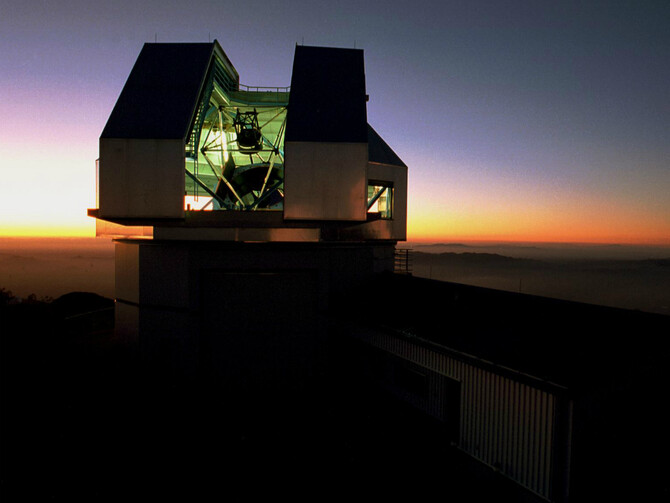Penn Astronomer Helping Build Next-generation Planet Finder
University of Pennsylvania astronomer Cullen Blake is part of a team selected by the National Aeronautics and Space Administration’s Astrophysics Division to build a $10 million, cutting-edge instrument to detect planets orbiting stars outside our solar system.
The team was selected in a national competition. When completed in 2019, the instrument will be the centerpiece of a partnership between NASA and the National Science Foundation called the NASA-NSF Exoplanet Observational Research program, or NN-EXPLORE.
“The goal of this project is to build an instrument capable of detecting a planet like Earth orbiting a star like the sun,” said Blake, an assistant professor in Penn’s Department of Physics and Astronomy in the School of Arts & Sciences.
The work will guide NASA’s future efforts toward finding evidence of life outside our solar system.
The instrument, named NEID, will be built during the next three years and then installed on the 3.5-meter WIYN telescope at Kitt Peak National Observatory in Arizona. NEID is derived from the word meaning “to discover or visualize” in the native language of the Tohono O’odham, a Native American people upon whose land Kitt Peak is located. NEID also is short for “NN-EXPLORE Exoplanet Investigations with Doppler Spectroscopy.”
NEID will detect planets by the tiny gravitational tug they exert on their stars, a phenomenon known as “the wobble effect.”
“When a planet goes around a star, the star physically moves a little bit and that movement is what we’re detecting,” Blake said. “People have been doing this for a long time, but to find a planet like Earth we need to improve the precision of the current techniques about ten-fold.”
The device they’re crafting is a giant spectrograph to take light and measure its various components. The team will look for features in the data that correspond to absorption by chemical elements present in the star’s photosphere; measuring the movement of these features will tell researchers about the magnitude of the star’s wobble, which is related to the mass of the planet revolving around that star.
The work demands extreme care and precision. The Penn researchers’ contribution will involve designing a high-tech, highly precise digital camera to record the starlight after the instrument has separated the light into its different color components. These data, which represent the star’s chemical signature, are analyzed to detect the stellar “wobbles” caused by planetary companions.
“These are very challenging measurements,” Blake said. “There are some really exciting new technologies that weren’t available even a few years ago that will help us understand what is a shift in data due to the star and what could be artifacts.”
The NEID project is a multi-institutional collaboration led by Penn State University’s Suvrath Mahadevan, assistant professor of astronomy and astrophysics. Scientists from the NASA Goddard Space Flight Center, the University of Colorado, the National Institute of Standards and Technology, Macquarie University in Australia, the Australian Astronomical Observatory and the Physical Research Laboratory in India will be contributing to the effort.
"We are privileged to have been selected to build this new instrument for the exoplanet community," Mahadevan said. "This is a testament to our multi-institutional and interdisciplinary team of talented graduate students, postdoctoral researchers and senior scientists."
NEID will provide new capabilities for the National Optical Astronomical Observatory, NOAO, which operates the Kitt Peak telescopes. When NEID is completed, astronomers worldwide will have access to this state-of-the-art planet finder.
NASA and NSF established the NN-EXPLORE partnership in February 2015 to take advantage of the full NOAO share of the WIYN telescope, to provide scientists with the tools and access to conduct ground-based observations that advance exoplanet science and to support the observations of NASA space astrophysics missions. KPNO is operated on behalf of NSF by NOAO. The NEID project will be managed on behalf of NASA’s Astrophysics Division by the Exoplanet Exploration Program Office at the Jet Propulsion Laboratory.








